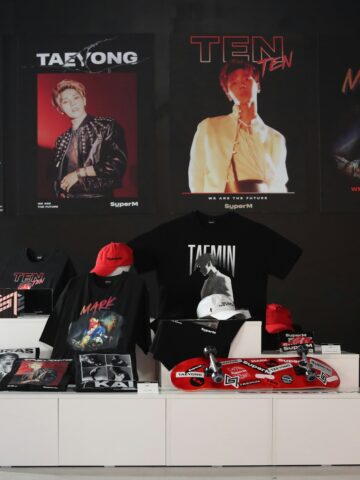Photocard collections rarely start as “collections.” They start as one lucky pull, one favorite selfie, one album unboxing that suddenly feels too pretty to shove back into the box.
Then another album arrives, another pull appears, and before long there’s a pile of photocards living in random sleeves, drawers, or between books, waiting for a proper home.
That’s where photocard trading comes in. Trading lets fans turn unwanted pulls into dream pcs, meet other collectors, and build binders that actually reflect their favorite members and eras. It can be incredibly fun, but also confusing and risky if the basics of setups, terms, and safety aren’t clear.
This guide walks through photocard trading from the ground up: the slang you’ll see everywhere, how to set up binders that make sense, and the safety habits that keep trades smooth and drama-free.

Jump to:
💌 What Is Photocard Trading and Why Do Fans Love It?
Photocards are small collectible cards that usually come with K-pop albums, merchandise, or special events; they often feature selfies, concept photos, or stage looks of each member.
Because pulls are random, fans rarely get exactly the member or version they want straight out of the album, which naturally led to trading as a way to “fix” collections.
Trading works like this: someone posts a photocard they have and a photocard they want, another fan with the opposite pull responds, they agree to trade, ship cards to each other, and both end up happier with their binders.
Fans love trading because it:
- Helps complete sets without buying endless duplicate albums.
- Connects collectors across countries and fandoms.
- Turns collecting into a social hobby, not just a solo shelf project.
With a bit of structure, and a lot of clear communication, photocard trading becomes both a creative outlet and a way to make slow, satisfying progress toward dream pages.
🧠 Key Photocard Terms: WTT, WTS, WTB, Pulls, Dupes & More
Trading posts often look like alphabet soup at first. A few core terms unlock most of what you’ll see:
- PC – Photocard.
- Pulls – The cards you got from albums or merch.
- Dupes – Duplicate cards of the same version.
- WTT (Want To Trade) – You want to swap this card for another.
- WTS (Want To Sell) – You’re selling the card for money instead of trading.
- WTB (Want To Buy) – You’re looking to purchase a specific card.
- ISO (In Search Of) – Another way to say what you’re looking for.
- Proofs – Photos or videos showing the item in your possession or screenshots of past successful trades/sales.
- Stamped / Untracked – Cheap mail with no tracking number.
- Tracked – Shipping with a tracking number so both sides can follow the package.
A typical caption might look like:
WTT [Group] [Album] PCs
H: Member A ver.1 / Member B ver.2
ISO: Member C any ver.
Located in: US, WW okay, stamped/tracked options available, proofs on highlight.
Once these basics make sense, trade posts feel less like code and more like simple classified ads.

📁 Choosing Your Binder: Sizes, Rings, and Pocket Pages
Binder setups are a whole hobby by themselves. The “right” binder depends on how big the collection is and how you want it to feel in your hands.
Binder sizes:
- A4 / standard 3-ring – Great for big collections, full groups, or multiple eras.
- A5 / mini binders – Perfect for focusing on one bias, one group, or special cards. Easier to carry to events or friends’ houses.
Rings & structure:
- 2-ring / 3-ring / 6-ring – Different regions use different standards; just make sure the pocket pages match the ring type.
- Strong rings and a sturdy cover matter because photocards add weight over time; a flimsy binder can bend pages.
Pocket pages:
- 9-pocket pages – Classic layout; great for full OT9 sets or 3x3 aesthetics.
- 4-pocket or 3-pocket pages – Good for larger postcards, bigger inclusions, or vertical layouts.
- 2-pocket pages – For bigger items like mini posters or ticket holders.
- 1-pocket pages – For full-size photos, documents, or special pieces.
A simple approach is:
start with one main 9-pocket binder for the core group, then add smaller A5 binders as bias collections grow.
🎨 Binder Setups & Aesthetic Layout Ideas
Once cards are safe, the fun part begins: deciding how to arrange them. Common ways to organize:
- By member – All cards of one member grouped together in order of era or year.
- By era/album – Each era gets its own section, with all members’ cards for that release together.
- By type – Selfie vs concept, album vs pob (pre-order benefit), lucky draws, etc.
- By color/theme – Pages arranged to create gradients or consistent color palettes.
Some layout ideas:
- Use fillers (blank cards with text or cute designs) to mark missing photocards, wishlists, or section titles.
- Arrange OT sets in 3x3 patterns so all members show up neatly on one page.
- Keep “special” cards, first pull, signed pc, rare event card, on dedicated highlight pages.
The best binder setups are the ones that feel satisfying to flip through; there’s no single correct system, only what makes the collection easy to understand and enjoyable to look at.
🤝 Trading Etiquette: Being a Reliable Trader
Good etiquette helps build a positive reputation, which then makes future trades easier. Core habits of a reliable trader:
- Reply within a reasonable time or let the other person know if you’re busy.
- Confirm details (which card, which version, shipping type, and addresses) before packing.
- Send clear packaging and mailing proofs, especially for tracked trades.
- Update the other party if there are delays, postal issues, or holidays.
- Post proofs of arrival when you receive their card: usually a photo or story tag thanking them.
- Handle lost mail or damage situations calmly, discussing options together rather than attacking or blaming.
Being transparent, kind, and consistent doesn’t just prevent drama; it turns trading into a community built on trust rather than suspicion.
❓ Frequently Asked Questions
For trades and sales, using a toploader is strongly recommended. It drastically reduces the chance of bending or creasing during transit. For very high-value cards, some collectors even double up (sleeve → toploader → cardboard sandwich), but at minimum, one good toploader is standard.
Stamped mail is common for low- to mid-value trades because it’s affordable, but it does not come with tracking and there is always some risk. For rare, expensive, or international cards, tracked shipping is safer so both sides can see where the envelope is in transit.
First, allow for normal postal delays, especially with international mail. After a reasonable period, reach out politely for an update. If there is no response at all and enough time has passed, traders sometimes warn others through scam lists or community posts. It’s frustrating, but staying calm, keeping records of messages, and learning from the situation helps protect future trades.





Comments
No Comments